Today, I’m very excited to share an interview that has been very long in the making. Back in January, I was at Vogue Knitting Live in New York (posts here, here, and here), and I had the chance to spend some time with Danielle Chalson. Danielle is a (mostly) knitting (with “a smidge of crochet”) designer. You may know her as Makewise Designs. Danielle can be found online on Ravelry (as makewise, on her designer page, and in the Makewise Designs group), her website, and Twitter.
(As a side note, this interview has taken so long to write up that I can no longer say that both Danielle and I live in New York City – since our interview, she has relocated to Long Island. On the other hand, now I can share that her Mackinac Tank pattern made the cover of the summer issue of Knitscene!)
Danielle has generously shared a coupon code for any of her self-published patterns with my readers! (Read on for more details.) All pictures of Makewise Designs patterns are used with Danielle’s permission.
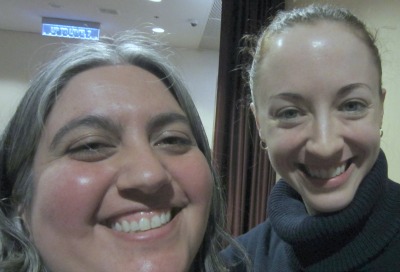
Underground Crafter (UC): Can you tell me first how you got started knitting?
Danielle: Growing up, my mom always knew how to knit and crochet, and I started doing it all the time, but I wasn’t really all that interested.
When I went to college, I lived in a dorm that had a community setting, and one of the people in my dorm wanted to do the Warm Up America program where you knit blanket blocks and then they’re sewn together for charity and donated. For some reason, at 20, all of the sudden I wanted to learn how to make these blanket blocks, whereas I’d never wanted to do it before. So, she taught me garter, stockinette, whatever. I don’t know why, but the fabric started growing off the needles and it was like magic. I thought to myself, “All of these wasted years!”
The Agnes Shaped Scarf pattern.
UC: Well, you have the (knitting) genes, obviously.
Danielle: Exactly. It just started from there, so it’s been going on 15 years at this point.
UC: Did your mom get mad that she wasn’t the one who taught you, or was she like, “Finally, you’ve taken it on!”
Danielle: No, just the opposite. She was thrilled. She still does quite a bit of knitting and crochet. Since then, she’s taught me how to crochet. She’s totally embraced it and we love to share tips, share things we’ve learned, and have a conversations with each other in that language that only two knitters are going to understand, like “I moved that ssk…” and people are just like, “What are they talking about?”
The Corinne Blanket, one of Danielle’s crochet designs.
UC: That’s awesome, now you guys have a secret language. How did you get started designing?
Danielle: I love to follow other people’s patterns. I love to see other people’s creative processes. At some point a switch just flipped and I thought, I’m looking for this thing, I didn’t find it anywhere, I didn’t find it on Ravelry (which is probably a representative sample of the knitting universe, at this point). I just thought, “Well, I’ve taken a lot of math, I know how stockinette behaves and garter.” There’s certainly still a lot of trial and error involved, but I thought why don’t I just try it?
I’m definitely kind of a Type A person, kind of I’ll do it myself, self-starter kind of person so I gave it a whirl. I gave it a shot and tried it and it was that same rush that I felt the first time [knitting]. Oh my gosh, the fabric, it’s growing off these needles, and now there’s that extra element of, and, it’s working out the way I expected in my head.”
The Nor’Easter Cowl pattern.
UC: And that doesn’t always happen. You left out the part where you have to tear out the thing…
Danielle: Well, I’m trying to glaze over those parts! I actually just was working on a design where the downside of being a Type A rears its head. Take it out, take it out, to the point where I think one of the most important things that any really successful designer has captured is not only knowing themselves, but knowing their style and knowing when to stop designing a piece. Don’t keep designing, and don’t over design it. You don’t need to add that one more textural element, it doesn’t need that second lace pattern. What you’ve done is what should stay. It’s the editing process – that’s what I call it in my head.
UC: Where you keep out those extra pieces that are overkill.
Danielle: RIght. So when you look at something by Debbie Bliss or Jared Flood or Hannah Fettig (who’s one of my big favorites), lots of times you can look at their pieces and know that’s one of their designs because their internal editing is so strong. So for me, this internal editing is what I find the most challenging obstacle. When is it exactly what I have pictured in my head? Have I tried to overdesign it? Does it need to be that complicated? That type of thing is tough. That’s the learning curve for me.
Danielle’s Mackinac Tank, on the cover of the Summer, 2013 issue of Knitscene. Photo (c) Interweave.
UC: Related to that, I’ve noticed that your designs are primarily self-published or though some branch of Interweave. I’m wondering if that’s a conscious decision or did it just work out that way based on where you’ve submitted?
Danielle: I think it’s a blend. Self-publishing, a lot of designers will tell you, has a liberating aspect at the end. You miss that deadline, something comes up – personal nature or professional (your day job) nature – then you bump your publishing deadline a week, that’s life.
For me, I am a good deadline person, I’m a good time manager, I always have been, so I wanted to reach out for that third-party publication recognition and also wanted to challenge myself in that way to be working with a reputable publication, work with the yarn that they’ve chosen on their timeline. Working with Interweave, I’m just really familiar with their publications. I’ve long loved Knit Scene, one of my very favorite magazines, so I think I was specifically targeting them. I really wanted to part of that family because I love their style, their ethos, their way of expressing themselves.
UC: You could see yourself fitting into their publications.
Danielle: Yeah, I think so.
The Belle Epoque Scarf and Wrap pattern.
UC: So what was that like the first time you have your printed pattern in one of their publications? Did you frame it on the wall?
Danielle: When you get something published in their magazines, they send you a copy of the magazine, but then they also send you copies of pages that were not inserted in the magazine – printed copies – so I put those in plastic sleeves because… Type A.
UC: That’s really nice of them. A lot of publishers don’t do that.
Danielle: So you get the bound copy and then you get the flat copy as well. But it wasn’t so much seeing it in print as it was getting that email from the editor saying that they would love to take the design and put it in.
The first time that happened to me, I think I looked at the email and thought, “This is a hoax!” Or, “Wait a minute, they didn’t mean to send this to me.” There’s that moment of self-doubt, and then your second thought is “Oooh, that is so cool!” My very first design for Interweave was for Interweave Knits and it was pillows. They were wool, bulky gauge, and I had to do it in July. It was a little bit of a steamy process, but it worked out.
The Courchevel Beret pattern.
UC: Do you have knitting books, for your own collection, or do you do everything online?
Danielle: When I need technical resources from the technical planning/pattern writing side of things, I much prefer written resources. I like to have them out in front of me. Obviously, stitch dictionaries. Interweave has a lot of publications that include charts for sweater sizing in different yarn gauges.
When I have the time to knit anything, other than what I’m hopefully designing for myself, I love online PDFs because I can keep them all in one place. The wealth of choices is overwhelming so I try to balance between the two, but I find that if I need a technical resource, I need it printed out.
Danielle and I bonded over our love of the Kinokinuya bookstore booth at VK Live.
UC: I know people think it is weird when you publish your patterns online that you don’t personally do everything online, but I feel the same way. For patterns, it’s one thing, but I want a tangible thing I can flip back and forth. Do you have any favorite stitch guides or books in your collection that you always go back to?
Danielle: You probably hear this a lot, but I love Kinokinuya, the Japanese bookstore that’s exhibiting here at VK Live. I love Japanese stitch dictionaries. I find that they include a lot of complex patterns, and sometimes I think my designing tends more towards simplicity, so sometimes I use those stitch patterns as a jumping off point and then I think, “Could I take out an element? Can I thin that idea out?” Because their patterns have cables, lace, and bobbles all in one stitch pattern, but maybe I just want the lace.
Lots of times, nothing ever comes of that brainstorming, but at the same time, I think it’s instructive. If I do want to edit that stitch pattern, how am I going to do it? If I take that cable out, what’s going to happen to the gauge and what’s going to happen to the texture? I think you can never get enough of that. I think it’s just like an established designer saying if you want to learn about designing and learn about the business, the best thing you can do is read patterns. Read other people’s patterns. Some people are going to shape that shoulder with a bind off and then seam that edge. Some designers are going to shape that shoulder with short rows and then do a three needle bind off. Why do you choose between them? Does it depend on the fabric, does it depend on the shape, does it depend on the style?
The Integral Shawl pattern.
UC: Speaking of the Japanese stitch guides, do you have a preference for written patterns or charted patterns? Some people seem very committed to one or the other.
Danielle: I think that goes to my inherent way of learning, which is to write things down. I retain things better if I write it down myself. For me, written instructions make more sense to me than charts lots of times.
UC: So if you see it in the Japanese stitch guide, you’re writing it down for yourself.
Danielle: Often. And even, look at the chart, decipher what I think is happening in the chart, knit, and write it down at the same time – because even if I successfully translate it from the chart into actual knitting, a week later, I’ll forget half of what I did. I’m looking at it saying, “How did I manage this?”
The Integral Shawlette, which Danielle wore to Vogue Knitting Live.
UC: While you’re here at Vogue Knitting Live, what exciting things are you planning to do?
Danielle: I took a seaming class with John Brinegar – I think a refresher course is always valuable. I’m taking a steeking class this afternoon with Ragga Eiríksdóttir. I’ve never done it, and she’s teaching it in the round. Usually for me, knitting in the round is greater than or equal to knitting flat, so I’m going to try that. Tomorrow, I’m going to work for the String Yarns booth all day because I used to work for them.
Ripened Scarf, one of Danielle’s free patterns.
UC: Do you have any exciting yarn store employee stories to share, or can you talk about how that influenced you as a designer?
Danielle: I think the influence is huge because you’re looking at different yarns from different manufacturers. On your feet, you need to know the gauge; the construction of the yarn – is it plied, is it a chainette, is it a single ply; you need to know how it blocks; how to treat it after it’s been knitted; what the construction of the ply is – 2 ply, 4 ply, 6 ply. It just exposes you to the entire world of options. So if you are comfortable working with a smooth Merino superwash, you don’t always spring to a Shetland wool option. You think it’s scratchy or something like that. But the upside of Shetland is it’s incredibly hard wearing and durable with really reliable gauge.
I think it broadens your horizons, it shows you what the options are, and it is really a good education into what you need to know as a designer. If you get into a third-party publication, they’re going to send you the yarn that they’d like you to work with it, and it might not be something you’re familiar with. You need to be able to look at it and say, “Oh, I see it has this construction, these many plies, these care instructions…”
The Winterberries Hat, Fitted Cowl, and Fingerless Mitts Set.
UC: And even on proposals, you can say, I’m looking for an x type of yarn because you have that background knowledge.
Danielle: Yes, I think it isn’t just what comes in so you’re prepared to work with it, but exactly like you said, it also informs your choices of when you even make a submission, to a magazine or something you want to produce yourself. You make that educated decision about this design really isn’t good for a single ply yarn. I really need a plied yarn for this.
UC: That’s great. A lot of people just learn that through arduous trial and error, and you got paid to get that experience!
Danielle: And I got to touch a lot of really nice yarn, too.
UC: String has a fancy collection!
Danielle: Yes, the beautiful cashmere that comes in from Italy is amazing.
The Sugarplums Blanket pattern.
UC: What’s next on the horizon for you?
Danielle: I have some publications coming up this year for different outlets, and that’s really exciting. I always try to blog about anything that I’ve done that’s new. I try to expose a little bit of the thought process behind it – the inspiration, or a spot where I struggled – because I think that designing, even for somebody who is really experienced, is so much of a journey. I mean, sure, there’s a lightening strike of inspiration from time to time, but it’s also a very measured, thoughtful, mechanical process of needle selection, yarn selection, seamed, or unseamed, lace, texture, and that type of thing, and that’s what keeps me so excited about it still.
There is so much to learn and I frankly think I’ll never learn it all. Somebody will always know more than you about a specific thing, but it’s that excitement of learning it and trying to make myself better, while at the same time producing something with my own two hands that at the end of the day, I can actually hold it and touch it. That’s what’s most gratifying.
Danielle has offered a 20% discount on her self-published designs for my readers through midnight Eastern time on Saturday, July 20, 2013. Just use the code MAKEWISE in her Ravelry shop or on her website.
Thanks, Danielle, for taking the time for the interview, and for sharing the coupon code!



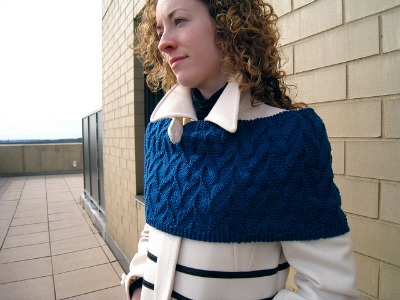
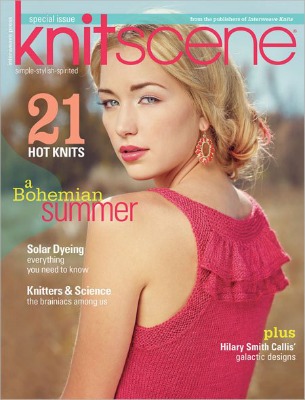
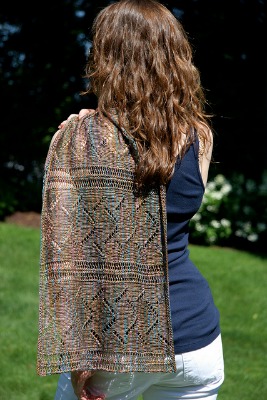
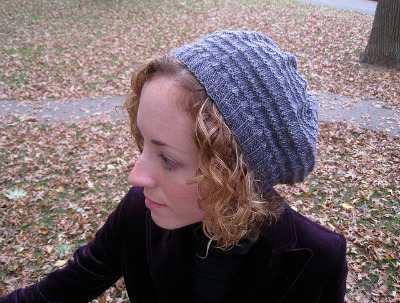
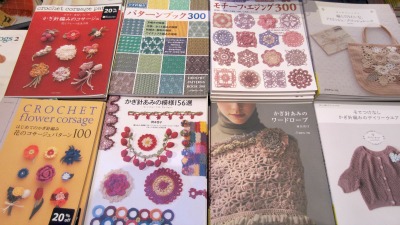
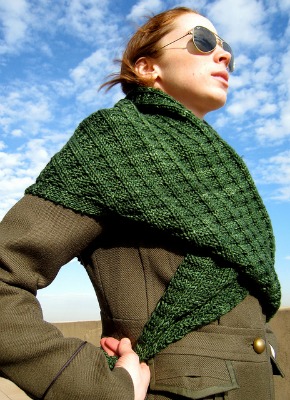
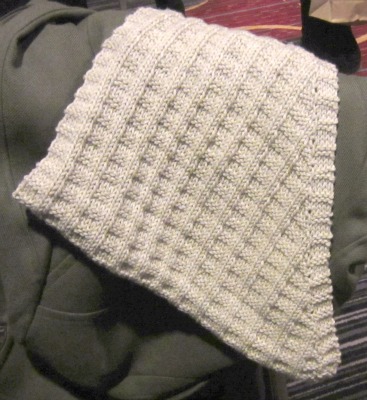
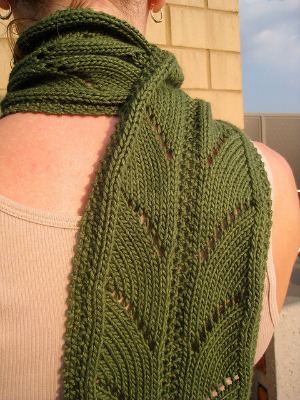


1 thought on “Interview with Danielle Chalson of Makewise Designs”